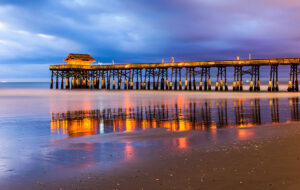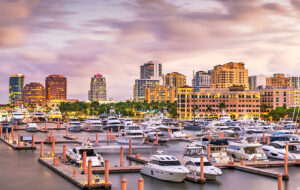
Port St. Lucie is a city full of surprises, where vibrant history meets modern charm. Did you know that this sunny Florida destination was once known for its early pioneers and unique legends, like tales of buried treasure left by shipwrecks along the Treasure Coast? Today, Port St. Lucie is home to beautiful communities, top-notch golf courses, and exciting facilities like the famous New York Mets’ spring training park. You’ll also find intriguing museums that explore the area’s past and celebrate its rich culture. Whether you’re a history buff, a nature lover, or just curious about what makes this city so popular, these 25 fun facts about Port St. Lucie are sure to spark your imagination and leave you wanting to visit this hidden gem. Let’s explore the stories, sights, and secrets of this enchanting locale.
1) Port St. Lucie is bigger than you might think.
Often overshadowed by cities like Miami or Orlando, this South Florida gem holds its own as the 2nd largest city in South Florida and the 6th largest city across the entire state. With nearly 250,000 residents calling it home, Port St. Lucie has blossomed into a bustling and vibrant community that boasts not only gorgeous scenery but a growing appeal for families, retirees, and young professionals alike. To put its scale into perspective, it’s even recognized as the 96th largest city in the entire United States. Yes, that’s out of tens of thousands of cities! Whether you’re strolling through its beautiful parks, enjoying the St. Lucie River, or simply soaking in the relaxed yet vibrant lifestyle, you’ll quickly see that this city has far more to offer than its unassuming reputation might suggest.
2) PopStroke originated in Port St. Lucie and includes Tiger Woods among its investors.
PopStroke is a popular entertainment venue blending modern mini-golf with a casual dining experience. Port St. Lucie is where the first PopStroke location debuted, setting a foundation for what would become a growing phenomenon in leisure and recreation. What makes it even more fascinating is the involvement of golf legend Tiger Woods, who joined as an investor and partner, adding his vision and expertise to the concept. The venue’s appeal extends beyond golf enthusiasts with its family-friendly atmosphere, including gourmet food, craft beer, and outdoor lounging areas. It’s a space where people of all ages can enjoy a laid-back yet innovative twist on the golfing experience. For Port St. Lucie, being the birthplace of PopStroke adds a touch of pride, as what started there has now expanded to other cities, carrying with it the spirit of fun, creativity, and Tiger Woods’ legendary touch.
3) The name St. Lucie originates from 16th century Spanish settlers.
The name St. Lucie traces its origins back to the 16th century, when Spanish settlers arrived along Florida’s coastline and began mapping and naming the unfamiliar lands they encountered. The region we now call St. Lucie caught their attention, and they christened it after Saint Lucy of Syracuse, a Christian martyr revered for her steadfast faith and her association with light and clarity. The name was chosen on December 13, the feast day of Saint Lucy, which coincided with the settlers’ exploration in the area. St. Lucie’s placement along Florida’s east coast, where the land meets the shimmering Atlantic waves, likely felt symbolic to the settlers, evoking Saint Lucy’s connection to illumination. Over time, the name stuck, becoming a lasting marker of the Spanish influence in Florida’s rich history. Today, the name “St. Lucie” is not only a nod to its Spanish roots but also a testament to the cultural and geographical legacy left by those early explorers as they blended faith, nature, and discovery into the identity of this vibrant region.
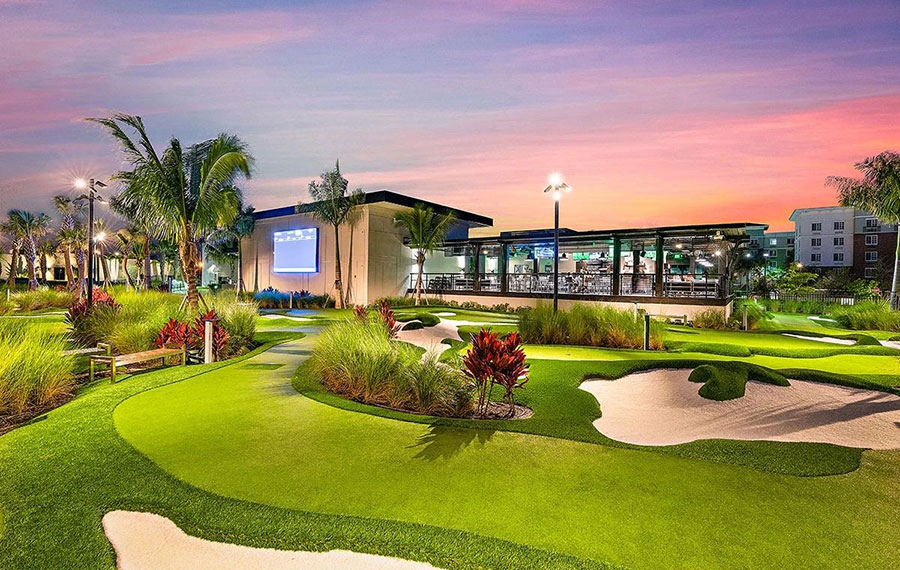
4) Peacocks roam freely throughout Port St. Lucie.
Walking along the scenic streets of Port St. Lucie, you might encounter one of the city’s most unexpected yet delightful sights: free-roaming peacocks. These stunning birds, with their iridescent plumage and majestic, fan-like tail displays, have become an unofficial emblem of the area’s charm. Unlike other towns that might boast wild chickens, pigeons or squirrels as their urban wildlife, Port St. Lucie is graced with these regal wanderers, adding a splash of color to daily life. Residents and visitors often pause to capture photos or simply marvel at their elegant strut, as the peacocks seem entirely at home among suburban yards, parks, and roadsides. Despite their exotic appearance, the peacocks have adapted well to the environment, often roosting in trees or calling out with their distinctive, melodic cries. Their presence is a reminder of the harmonious balance between nature and community, giving this growing city a unique personality that’s hard to forget.
5) The nearby town of Rio has an unconventional pronunciation.
Not far from Port St. Lucie is the quaint town of Rio, and what makes this little spot so unique isn’t just its size or charm, but how its name is pronounced. Unlike the commonly expected “Ree-oh,” locals proudly refer to it as “Rye-oh.” This unconventional twist offers a delightful insight into the area’s personality and history. The pronunciation is rumored to reflect the region’s blend of influences and perhaps a bit of the playful spirit that small towns often hold dear. It’s a detail that catches visitors off guard in the best way, sparking curiosity and conversation. Hearing a local share the correct way to say “Rio” is like being brought into an inside joke, a shared secret that makes you feel just a little more connected to the area’s identity. Beyond its linguistic quirks, this tiny community embodies the relaxed, unpretentious vibe that Florida’s Treasure Coast is known for, making it yet another reason why the Port St. Lucie area is both charming and distinctive.
6) American Icon Brewery is housed in Vero Beach’s most historic building.
Tucked away in the charming city of Vero Beach, the American Icon Brewery stands as a testament to history and creativity, housed in the town’s most historic building. Built in 1926, this unique location was a diesel power plant, a structure that played a key role in powering the area nearly a century ago. Inside, the brewery proudly preserves one of the six original diesel generators, seamlessly blending industrial history with its modern-day craft brewing operations. The building’s significance runs deeper than local nostalgia – it was officially added to the U.S. National Register of Historic Places in 1999. This fusion of past and present sets American Icon Brewery apart, inviting visitors to sip on innovative beers while surrounded by authentic pieces of Florida’s rich industrial heritage.
7) Fort Pierce was named after the brother of a U.S. President.
Nestled along Florida’s picturesque Treasure Coast, Fort Pierce carries a fascinating piece of history tied to its namesake. The town gets its name from a fortification built in 1838 during the Second Seminole War. This fort was named after Lieutenant Colonel Benjamin K. Pierce, an army officer who also happened to be the brother of Franklin Pierce, the 14th President of the United States. Imagine that connection to national history! Although the fort itself was a product of conflict, its name became part of a growing and evolving community. By 1901, the settlements that had sprung up around the old fort were officially incorporated into the new city of Fort Pierce. Today, this sunny city not only boasts a rich heritage but also stands as a thriving hub of cultural charm, while subtly paying homage to the legacy of Benjamin K. Pierce and his family’s place in American history.
8) Port St. Lucie was originally developed to be a retirement community.
Port St. Lucie’s origins set it apart from many of Florida’s cities. While nearby coastal locales grew around historic downtowns that flourished near train stations or bustling cruise ports, Port St. Lucie’s story is quite different. Incorporated in 1961, the city was envisioned by a development group not as a hub of commerce or tourism, but as a serene retirement community. The plan focused on selling quarter-acre lots to retirees, offering them a peaceful slice of Florida life. Notably, this vision didn’t initially prioritize key infrastructure that we often take for granted today. The city’s early days came without sidewalks, streetlights, or even water and sewer systems, with those essential elements set to be added later. This unconventional beginning shaped Port St. Lucie into a unique community, growing steadily out of its quiet roots into a thriving area while maintaining its distinctive charm.
9) Spruce Bluff Mound is believed to be a burial site of the Ais people from 100-300 B.C.
The Ais were a prominent indigenous group that thrived along Florida’s east coast, known for their deep connection to the land and sea. This mound is thought to have held significant ceremonial importance, serving as a final resting place for members of their community. Its construction showcases the Ais people’s resourcefulness and cultural practices, as building a burial mound required meticulous planning and labor, reflecting their respect for ancestry and spirituality. For the Port St. Lucie region, this site is a rare and invaluable link to a pre-Columbian era that predates many recorded histories in the state. Today, Spruce Bluff Mound connects us to the complex narratives of Florida’s first inhabitants while offering a glimpse into the traditions and lives of the long-gone Ais people. Its preservation allows locals and visitors to appreciate the rich tapestry of history that shaped this area, reminding us of the continuity between the past and the present.
10) The St. Lucie River was featured in the 1979 Bond film Moonraker.
The St. Lucie River found its moment in the Hollywood spotlight when it appeared in the 1979 James Bond film Moonraker, adding an intriguing touch of glamor to this scenic Florida waterway. The river served as the film’s Amazon River in a dramatic action scene where James Bond, played by Roger Moore, navigates a high-speed boat chase. This sequence showcased the river’s lush surroundings and winding waterways, which provided the perfect setting for the intensity of Bond’s escape. The choice to film on the St. Lucie River not only highlighted the natural beauty of the area but also reinforced the atmosphere of adventure and mystery that defines the Bond series. For locals, it’s a point of pride to see a part of their community immortalized in such an iconic cinematic moment. Interestingly, the filmmakers were drawn to the river for its picturesque yet untamed look, which contrasted with the futuristic technology featured in the film.
11) Fort Pierce is called the “Sunrise City.”
Fort Pierce earns its nickname from the breathtaking sunrises that grace its eastern horizon with radiant hues of orange, pink, and gold. Located along Florida’s Treasure Coast, this charming city’s position on the Atlantic Ocean provides a front-row seat to the daily spectacle as the rising sun greets the tranquil waters and the soft, sandy shores. The nickname also reflects Fort Pierce’s vibrant sense of renewal and natural beauty that resonates through its community, culture, and surroundings. From the serene beaches at sunrise to the iconic Fort Pierce Jetty, where waves crash gently against the rocks as the morning unfolds, the city offers endless moments for nature lovers to marvel at its tranquil charm. Coupled with its rich history, laid-back atmosphere, and local traditions like fishing and boating, Fort Pierce truly lives up to its title as a city that symbolizes the promise and beauty of each new day, drawing visitors and locals alike to its shores to witness their own slice of paradise.
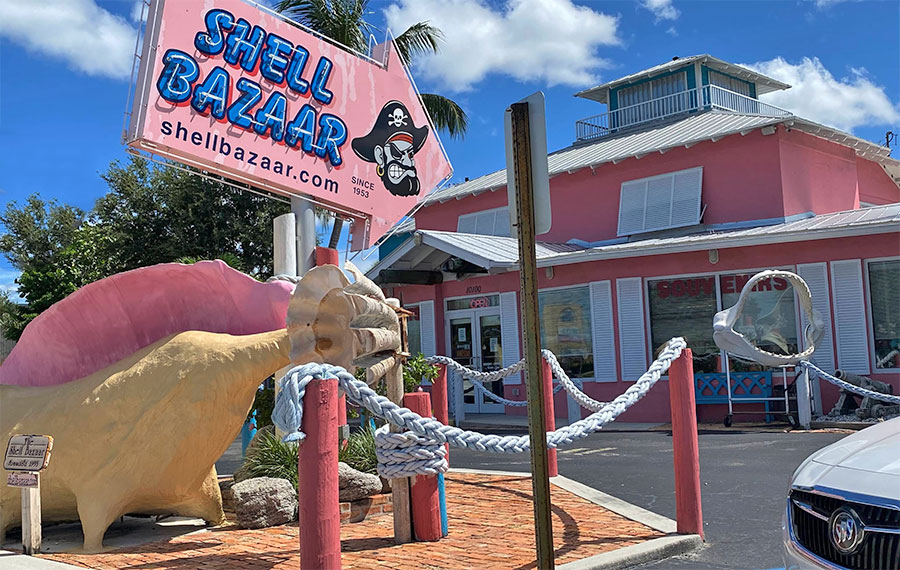
12) The Shell Bazaar is Port St. Lucie’s oldest running attraction.
The Shell Bazaar is much more than a roadside novelty – it’s a cherished slice of local history and a beloved family business. Since its founding in 1953, this kitschy yet endearing shop has been family-owned and operated, passing through generations who maintain its vibrant charm and warm hospitality. Known for its delightfully eclectic selection of souvenirs, seashells, and nautical treasures, the Shell Bazaar has become a must-see stop for both locals and visitors. Its crown jewel? The iconic giant conch shell sculpture that greets guests at the entrance. This oversized tribute to the sea is impossible to miss and has become a favorite photo spot, cementing its place as a quirky landmark in the community. The Shell Bazaar weaves together nostalgia and whimsy, offering a window into Florida’s roadside attraction culture while celebrating the resilience of a family-owned business that has lovingly served its customers for over seven decades.
13) Port St. Lucie has hosted celebrities of film, music and sports.
Port St. Lucie may be known for its beautiful weather and laid-back charm, but it also has a surprising connection to some big-name celebrities. Actress Megan Fox, famously known for her roles in blockbuster hits like Transformers, has spent time in the city, reportedly enjoying its coastal vibes and quiet neighborhoods, a perfect contrast to the Hollywood hustle. Musician Vanilla Ice, the iconic rapper behind the ’90s hit “Ice Ice Baby,” brought his flair to Port St. Lucie as not just a visitor but a resident who embraced the area, even filming portions of his home renovation show, The Vanilla Ice Project, in the region. On the sports side, retired MLB pitcher Rick Ankiel, who captivated fans with his pivot from pitcher to outfielder during his baseball career, has also left his mark on Port St. Lucie. Ankiel, connected to the area through training and events, played a role in fostering the city’s reputation as a sporting destination. Together, these celebrities highlight the city’s unique ability to attract talent from all walks of life, blending star power with its relaxing, community-focused environment.
14) Despite its name, Port St. Lucie technically has no seaport.
It’s an amusing twist of irony that Port St. Lucie, a city with “Port” right in its name, doesn’t actually have a seaport. This sunny Florida city, nestled between Orlando and Miami along the Treasure Coast, is surrounded by natural beauty rather than bustling docks or massive shipping containers. Its name, which might suggest a bustling harbor or seaside trade hub, instead reflects the area’s early history and the naming trends that often aimed to capture a sense of nautical connection. What Port St. Lucie does have, however, are winding rivers, lush preserves, and idyllic canals that make it a paradise for kayakers, paddleboarders, and small boating enthusiasts. The city’s absence of a traditional seaport adds a layer of charm, making it feel less industrial and more like a serene escape. It’s a quirky little reminder that names don’t always tell the whole story, and Port St. Lucie’s true treasures are tucked away in its parks, waterways, and laid-back coastal vibes rather than in a bustling maritime hub.
15) The PGA Golf Club boasts three courses designed and dedicated to pro golfers.
Located in the heart of Port St. Lucie, the PGA Golf Club at PGA Village offers an extraordinary experience for golf lovers with its trio of world-class courses, each uniquely designed by and dedicated to legendary pro golfers. These championship courses are a testament to the expertise of Pete Dye and Tom Fazio, whose creative visions bring a blend of challenge and beauty to every swing. The Dye Course, known for its dramatic bunkering and links-inspired layout, offers a nod to traditional Scottish golf. Meanwhile, the Wanamaker Course and the Ryder Course, both crafted by Tom Fazio, provide lush fairways framed by Florida’s natural beauty, with layouts designed to test strategy as much as skill.
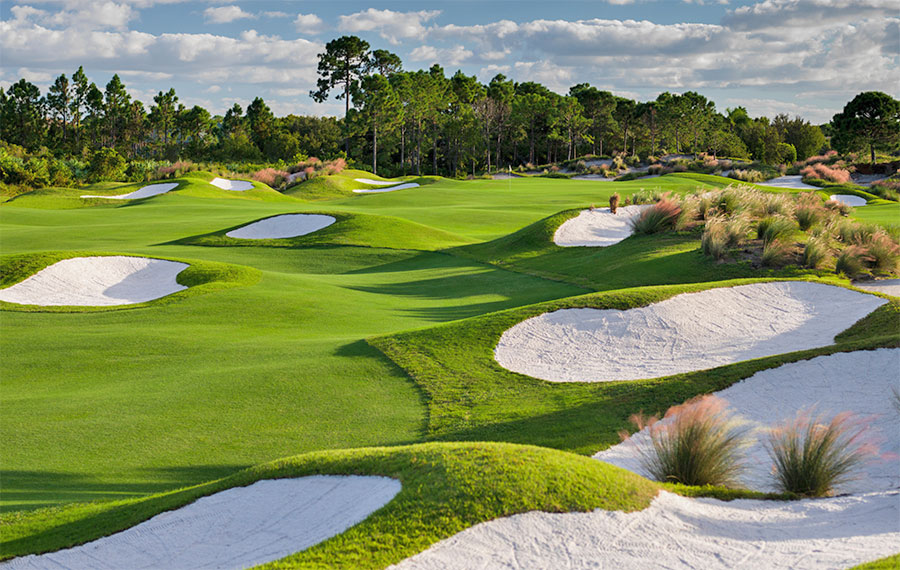
16) Exhibits at the Navy UDT-Seal Museum include the famous lifeboat from the Maersk Alabama hijacking.
The National Navy UDT-SEAL Museum in Fort Pierce features an extraordinary piece of modern maritime history that continues to captivate visitors: the lifeboat used by Somali pirates to hold Captain Richard Phillips hostage during the gripping Maersk Alabama hijacking in 2009. This seemingly ordinary orange vessel carries immense historical weight, symbolizing both the courage of those at sea and the exceptional skill of the U.S. Navy SEALs who ended the hostage crisis. The Maersk Alabama incident, vividly chronicled in the film Captain Phillips, became an emblem of international piracy threats and the daring operations required to combat them. By including this lifeboat in its collection, the museum connects visitors with a tangible piece of a high-stakes rescue mission that showcased the precision and bravery of the SEALs.
17) The Port St. Lucie Botanical Gardens was once part of a local fishing camp.
Before it became the tranquil community haven we know today as the Port St. Lucie Botanical Gardens, this lush patch of land along the south bank of the St. Lucie River held a very different kind of charm. Prior to its purchase, the space was the site of Burt Pruitt’s lively fishing camp, a beloved attraction for locals and visitors alike. Pruitt’s camp was a quintessential slice of old Florida, offering snook fishing in the rich, swampy waters, boisterous card games under the shade of trees, and a menagerie of wildlife exhibits that delighted nature lovers. Wild turkeys wandered freely, sharing the space with the laughter and stories of anglers who had come to unwind. The air was thick with the hum of adventure and camaraderie, making it a unique recreational spot. Today, the area has transformed into the serene and picturesque Botanical Gardens, a place of reflection and beauty. Yet, walking the garden trails, one can almost feel echoes of its vibrant past, a reminder of its roots as a gathering place woven into the natural landscape.
18) The Elliott Museum is named after the prolific inventor Sterling Elliott.
The Elliott Museum in Stuart is a fascinating tribute to the inventive genius of its namesake, a man whose creativity and innovation left a lasting mark on history. Named in his honor, the museum celebrates the incredible contributions of an inventor who, over his lifetime, secured more than 125 patents. Elliott’s inventions were as practical as they were groundbreaking. For instance, he developed the first steering mechanism for bicycles, a design that would later become pivotal in steering systems for automobiles. The museum doesn’t just commemorate Elliott’s ingenuity – it also serves as a cultural gem for the local community. Visitors can explore a diverse collection of vintage cars, historic memorabilia, and even intricate models that reflect his inventive spirit. Situated along Florida’s Treasure Coast, the Elliott Museum deepens the connection between history, invention, and the vibrant Stuart area. It’s more than just a building – it’s a celebration of curiosity, creativity, and the incredible impact one individual can have on the world.
19) Clover Park has had many names.
Clover Park, the spring training home of the New York Mets, has had quite the naming journey over the years, reflecting its rich history and evolving partnerships. Originally opened in 1988 as Thomas J. White Stadium, named for a St. Louis-based real estate developer who played a pivotal role in bringing the Mets to Port St. Lucie. This title remained until 2004, when it was changed to Tradition Field, a nod to the surrounding community of Tradition. However, this name wouldn’t last forever. In 2010, a new multi-year agreement led to the ballpark being rebranded as Digital Domain Park, symbolizing the partnership between the Mets and the Digital Domain media company. Just two years later, as that partnership ended, the stadium returned briefly to a classic, no-frills name, Mets Stadium, before again being renamed Tradition Field in 2013. The next significant change came in 2017 when First Data secured naming rights, giving birth to First Data Field. Finally, the acquisition of First Data by Fiserv in 2019 ushered in today’s name, Clover Park, highlighting Fiserv’s Clover point-of-sale platform. This series of transformations not only marks the evolution of sponsorship ties but also maps the stadium’s dynamic connection to the community and commerce, making its legacy as varied as its names.
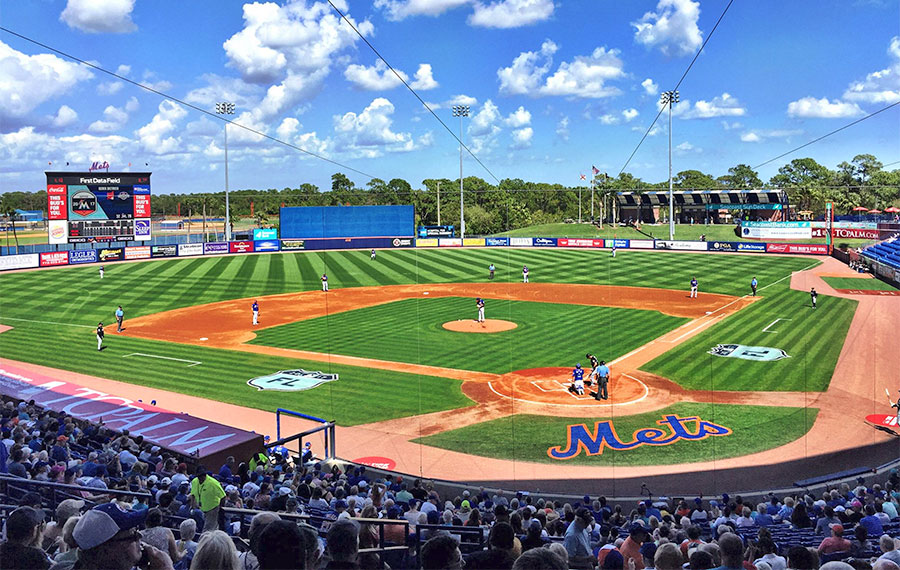
20) Blind Creek Beach is a designated nude beach.
Tucked away along the tranquil shores of Port St. Lucie, Blind Creek Beach offers visitors a truly unique experience as one of Florida’s designated nude beaches. This hidden gem is more than just a place to enjoy the sun and sand – it’s a celebration of freedom and a refreshing retreat from the everyday grind. The beach’s unspoiled natural beauty is a major draw, with its soft, untouched sands and rolling dunes that seem to stretch endlessly along the Atlantic coast. Free from commercial development, it’s a haven for those seeking a peaceful and liberating connection with nature. Designating the beach for nude recreation has turned it into a rare sanctuary where visitors can shed their inhibitions (along with their clothing) and truly relax in their own skin, with sunscreen recommended. The welcoming community vibe and tranquil atmosphere make it an inclusive destination for anyone curious about the freeing experience of clothing-optional beaches. Whether you’re a seasoned naturist or simply looking to cross a unique experience off your bucket list, Blind Creek Beach offers a perfect blend of personal discovery, natural beauty, and serene coastal charm.
21) Heathcote Botanical Gardens is home to one of the country’s largest tropical bonsai displays.
Heathcote Botanical Gardens in Fort Pierce is a hidden treasure brimming with natural splendor, and among its most remarkable features is one of the largest tropical bonsai displays in the US. This awe-inspiring collection, known as the James J. Smith Bonsai Gallery, showcases over 100 meticulously crafted trees, each one a masterpiece shaped by time, patience, and artistic vision. What sets this collection apart is not just its size but its diversity, featuring tropical and sub-tropical specimens that thrive in Florida’s unique climate. The exhibit is a joy for both seasoned bonsai enthusiasts and curious first-time visitors, offering a rare chance to witness living art. The gallery also tells a story of dedication, as many pieces were cultivated by James J. Smith himself, a local bonsai pioneer whose legacy lives on through this stunning array. Whether you’re drawn to the intricate root systems, the delicate foliage, or the sheer artistry of it all, the bonsai display at Heathcote Botanical Gardens leaves an unforgettable impression on everyone who visits.
22) Frederick Douglass Memorial Park hosts horseback riding tours along the beach.
Located on Hutchinson Island in Fort Pierce is Frederick Douglass Memorial Park, where visitors can experience the unparalleled joy of horseback riding along the beach, blending recreation with a sense of history and wonder. This unique activity allows you to saddle up and take in the coastal sights of rolling waves, pristine sands, and the endless horizon, all while feeling the rhythm of the horse beneath you. The park, named in honor of Frederick Douglass, a prominent abolitionist and social reformer, carries profound cultural significance, serving as a symbolic reminder of freedom and persistence. Riding horseback along the beach doesn’t just make for a memorable adventure – it offers a rare opportunity to connect with nature and reflect on the enduring legacy of Douglass. Whether you’re an experienced rider or trying it for the first time, these tours promise a perfect mix of scenic beauty, leisure, and a touch of history, ensuring a meaningful escape from your everyday routine.
23) Many of Port St. Lucie’s street signs are misspelled.
Strolling through downtown Port St. Lucie, you might find yourself doing double-takes at the street signs, thanks to a quirky and enduring part of the town’s history. Many of the signs boast some rather creative spellings, making them accidental conversation starters. The origins of these typos remain a mystery, though local lore offers an amusing theory. According to legend, the man hired to hand-paint the street signs during the early days of the town’s development might not have been in the clearest state of mind, as sobriety wasn’t always on his side. While some errors have been corrected over the years – in 2016, the zoning board adjusted “Cresent Avenue” to its proper “Crescent Avenue” – numerous mistakes remain as part of the landscape. Take a drive and you’ll encounter “Granduer Avenue,” which should be “Grandeur,” “Aubudon Avenue” instead of “Audubon,” “Dalmation Avenue” rather than “Dalmatian,” and “Chello Lane,” where the cello is evidently off-key. These quirky slip-ups give Port St. Lucie an unexpected charm, offering locals and visitors alike a reason to chuckle as they meander through town.
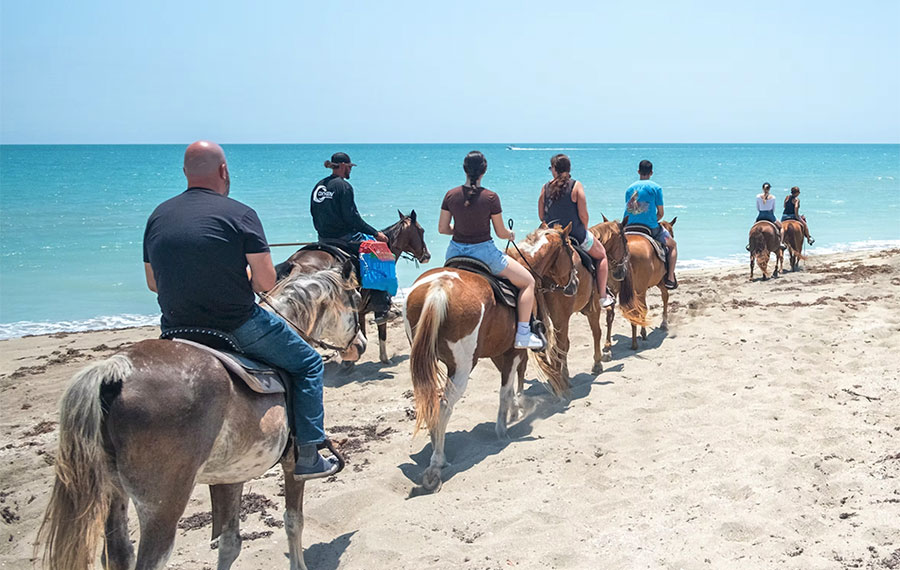
24) Snook Nook in Jensen Beach has been supplying bait and tackle for 75 years.
Snook Nook, a beloved fishing supply shop in Jensen Beach, marked an incredible milestone in 2024 as it celebrated 75 years of serving anglers with bait, tackle and advice. Known as a true classic in the world of saltwater tackle shops, this iconic establishment has become a cherished part of the community. Since the 1980s, Snook Nook has been a family-owned operation, adding a deeply personal touch to its legacy. When Henry Caimotto took the reins decades ago, he laid the foundation for a shop that would cater to fishermen with unparalleled expertise and quality gear. His son, Fred Caimotto, later took over and has continued the tradition, ensuring that Snook Nook remains a trusted hub for those who love the thrill of coastal fishing. With its rich history, warm family ownership, and enduring reputation, Snook Nook stands as both a local treasure and a testament to the enduring spirit of small business done right.
25) The Treasure Coast is named after the 1715 loss of a fleet of Spanish treasure ships.
The Treasure Coast, a picturesque stretch along Florida’s southeastern shoreline, owes its intriguing name to a fascinating chapter of maritime history dating back to 1715. That year, a fleet of 11 Spanish galleons, heavily laden with treasure from the Americas, set sail for Spain. Their cargo included gold, silver, jewels, and other riches harvested from the New World, destined to bolster Spain’s wealth and power. Tragically, this grand expedition met disaster when a powerful hurricane struck off the Florida coast, causing the ships to wreck along the shallow reefs near present-day Martin, St. Lucie, and Indian River counties. The scattered treasure, much of it washing ashore or sinking to the ocean floor, remained out of reach for years, attracting opportunistic salvagers and curious adventurers. Even centuries later, treasure hunters continue to uncover hidden remnants from the wrecks, bridging past and present. It’s this legacy of sunken riches that earned the region the evocative name “Treasure Coast,” forever linking its identity to this dramatic and historically significant maritime calamity.
So you see, Port St. Lucie is a destination teeming with stories, surprises, and unforgettable spots waiting to be discovered. From its fascinating history and vibrant attractions to its hidden legends, there’s so much to fall in love with. Whether you’re planning on exploring scenic trails, soaking up the local culture, or uncovering quirky fun facts, there’s always something new to learn. Want to dig even deeper into what makes this city so special? Check out our Port St. Lucie Vacation Guide for more tips, insights, and inspiration for your next adventure!
